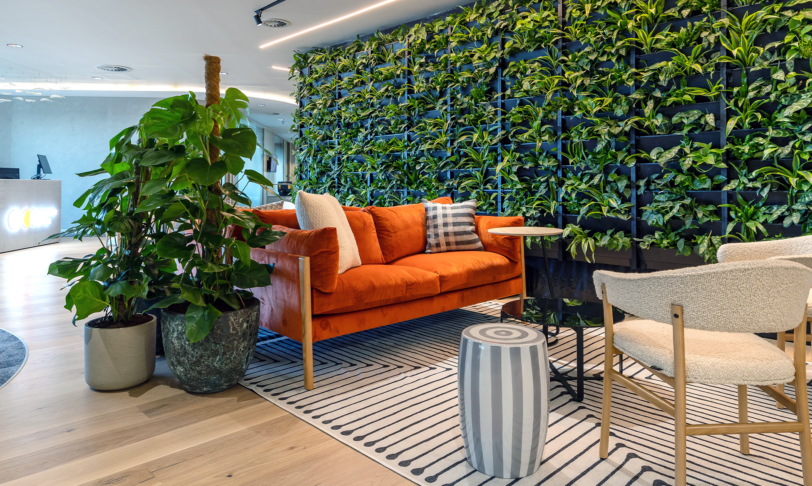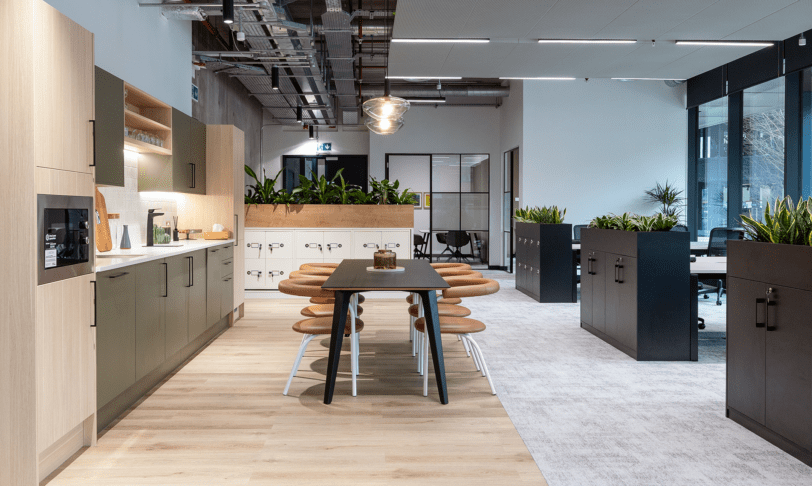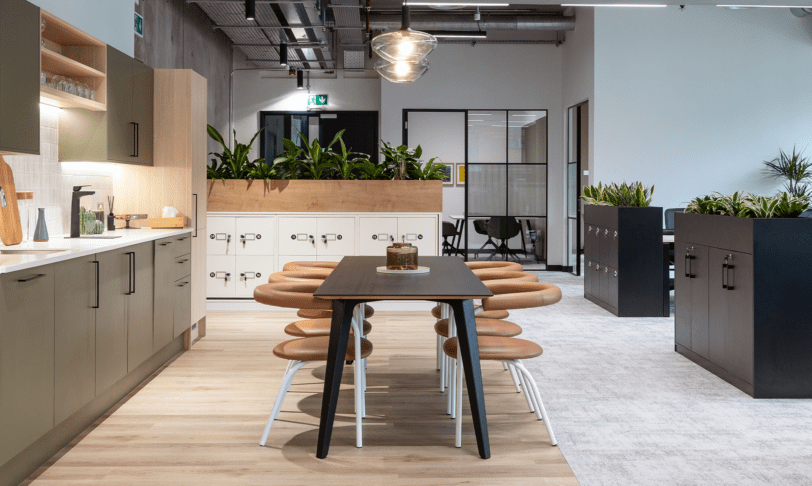What’s the ideal office temperature?
What is the ideal office temperature? What may seem like a straightforward question on the surface can actually reveal a lot about office design, workplace dynamics and the kind of environment needed for both productivity and workplace wellbeing. It’s a hot topic (no pun intended) so in this article, we’ll explore guidelines for the ideal office temperature, delve into how temperature affects a slew of workplace metrics and offer practical steps to ensure a comfortable and productive work environment.
Guidelines for the ideal office temperature
Firstly, when discussing office temperature, it’s important to acknowledge that there isn’t a definitive one-size-fits-all solution. Various factors, including the type of work being performed, the building’s insulation, and even the local climate, can all influence what’s considered “ideal.” However, general guidelines can help as a starting point for most workplaces.
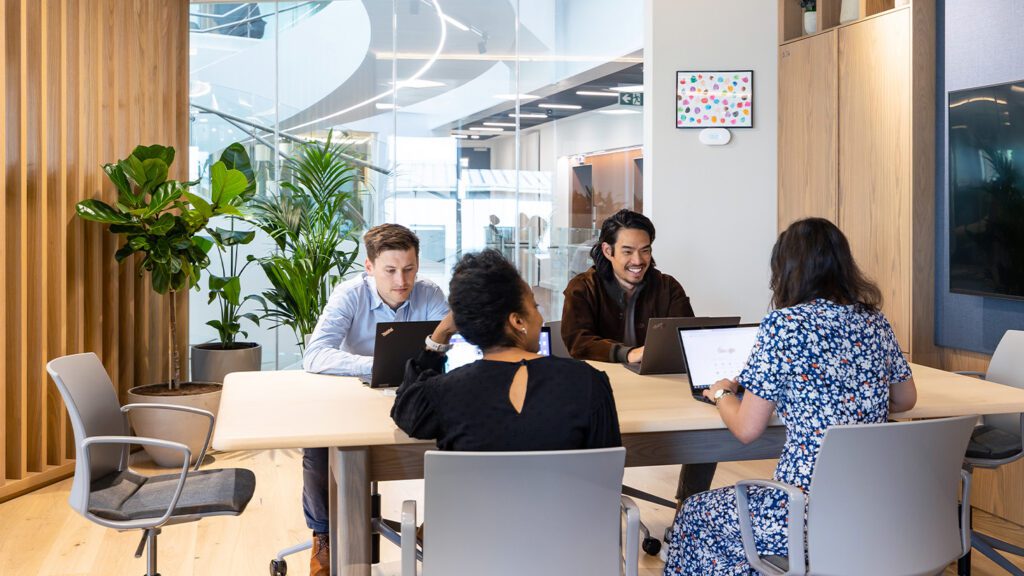
What is the minimum advised office temperature?
In the UK, there is no legally defined minimum temperature. That said, the Health and Safety Executive (HSE) suggests that indoor workplaces should be at least 16°C (or 13°C if the work involves significant physical effort). This ensures that employees are not exposed to conditions that may be detrimental to their health or wellbeing.
What is the maximum advised office temperature?
On the other end of the spectrum, the law doesn’t specify a maximum temperature in the UK, but most would argue that one is probably overdue. The HSE states that employers should maintain a “reasonable” temperature, ideally not exceeding 24°C for typical office work.
So what is the ideal office temperature?
We’re sure that many of you have come to this article to settle a debate with your peers. Saying ‘it depends’ may feel like a cop-out, but the ideal office temperature is to be taken on a case-by-case basis. That said, we do need some sort of benchmark!
Research and workplace guidelines often suggest that the ideal office temperature for comfort and productivity lies between 21°C and 23°C (70°F and 73°F). This strikes a balance between being warm enough to avoid the chill and cool enough to limit overheating.
How does the ideal temperature vary between summer and winter?
As to be expected, seasonal changes play a significant role in what temperature is considered ideal. In the summer, slightly lower temperatures within the ideal range (around 21°C) are preferred, particularly if humidity levels are high or a heatwave is experienced (as is becoming more regular in the UK). In contrast, during winter slightly warmer settings (up to 23°C) may be more comfortable. The trick is to avoid extremes, as both very cold and very hot conditions can lead to discomfort and distraction.
How does gender affect the ideal office temperature?
The role of gender in choosing a preferred office temperature is often innocently joked about or pointed out in anecdotes or personal experiences – but you may be surprised to know the full extent of how gender affects the impact of office temperature.
This difference is not merely anecdotal. Two specific studies reported in the scientific journal Nature note a gender bias in understanding the ‘ideal’ office temperature. This goes back to the 1960s with the introduction of Fanger’s “thermal comfort model”, which determined ideal temperatures using the benchmark of a 154lb (69kg) 40-year-old male. Since then, traditional office temperatures have often been skewed in favour of men.
Given this bias, it’s no wonder that according to a study in Nature, women are 1.8 times more likely to be dissatisfied with their office than men. Women reported feeling too cold three times more often than men, especially in summer when the air conditioning is on blast. The research found that women prefer an office temperature of around 24°C, whereas men are more comfortable at around 21°C).
If offices adjusted air conditioning with women’s comfort in mind, the temperature could rise by an average of 2-3°C. While men could opt for lighter clothing if they find it too warm, this adjustment would likely reduce both the office’s carbon footprint and energy costs.
How does office temperature affect productivity?
Taking these findings further, the impact of temperature on productivity is really quite notable. Several studies have linked higher productivity levels to environments where the temperature is optimised for the specific needs of different people. For instance, one study found that productivity drops by about 2% for every degree above 25°C. Conversely, temperatures below 20°C can cause employees to feel cold, leading to distractions as they seek to warm up.
In offices where temperatures are consistently too high or too low, you may notice an increase in errors, slower task completion, and even a rise in absenteeism. This is why maintaining an ideal temperature is not just a matter of comfort but a strategic move to improve overall workplace efficiency and inclusivity.
Interaction’s Ultimate Guide to Office Fit-outs [PDF Download]
A comprehensive step-by-step guide to office fit-outs. Advice on decision making, budgets and finding a location. Download here.
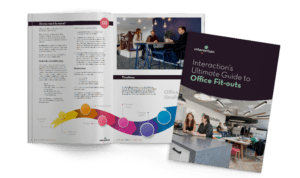
Guidelines for achieving the ideal office temperature
Going beyond just fiddling with a few dials until everyone’s happy, here are some expert guidelines to help maintain the best environment for you and your employees.
1. Office design
If you’re moving to or planning on creating a new office space, doing so with environmental and use-case scenarios in mind can make a huge difference. Consider which areas will receive the most sunlight, how different building materials trap or release heat, and the layout and the type of work that will be done – including where to place air conditioning or heating.
Another consideration is the number of people working in certain areas – having more people will undoubtedly raise the temperature, especially if there is a flurry of activity. Consistency is key here, as is being empathetic and receptive to the needs of all your employees.
2. Implement zoned climate control
Consider installing a zoned climate control system that allows different areas of the office to be heated or cooled. Bear in mind how the changing seasons will affect your building and employees. Adjust the office temperature settings seasonally to reflect these changes. For instance, reduce cooling in areas tucked away in the shade, while slightly raising temperatures in spaces that receive abundant sunlight. In winter, focus on maintaining warmth in draft-prone areas. This practice not only keeps employees comfortable, but it can also lead to energy savings.
3. Regular maintenance of HVAC systems
Ensure your heating, ventilation, and air conditioning (HVAC) systems are regularly maintained and serviced. A well-functioning system really is crucial for keeping temperatures consistent and avoiding unexpected breakdowns that could leave employees either feeling the heat or out in the cold.
4. Use of smart thermostats
Smart thermostats can automatically adjust temperatures based on occupancy levels and external weather conditions. These devices can help maintain the ideal temperature throughout the day, minimising the need for manual adjustments and reducing energy consumption.
5. Customise working spaces
Beyond having air-conditioning in certain areas, another option is to have even more personalised temperature controls for each desk. If this means something as basic as providing tiny desk fans in summer, it could make a big difference for many people!
Interaction prides itself on best-in-class office design and fit-outs. We specialise in evidence-based and strategic design, creating modern destination offices to meet your employees’ needs and requirements. Want to find out more? Say hello by scheduling a chat with Charlie our Relationship Manager, signing up for our newsletter or downloading one of our industry whitepapers.

